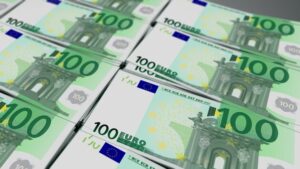
Over 2021, mobile operator Lifecell LLC (lifecell) received a net profit of UAH 610.9 million, which is 4.24 times less than in 2020 (UAH 2.589 billion), according to the company’s financial statements.
At the same time, the operator’s income in 2021 increased by 24.1%, to UAH 8.483 billion.
EBITDA increased by 30.9%, to UAH 4.751 billion, while EBITDA margin increased by 2.9 percentage points (p.p.), to 56%.
Lifecell’s capital investments in 2021 increased by 3.2%, to UAH 3.594 billion.
According to the information provided, in the fourth quarter of 2021, the operator’s income increased by 25.7%, to UAH 2.406 billion. EBITDA in the October-December quarter increased by 26.5%, to UAH 1.319 billion.
On an annual basis, the operator’s active three-month subscriber base in 2021 expanded by 13.6%, to 9.2 million (compared to 8.1 million in 2020).
The active three-month 4.5G subscriber base in 2021 grew 32% year-on-year to 73% of total mobile data users at the end of the year. Average data consumption per user in the fourth quarter of 2021 grew by 13%, mainly due to higher data usage by 4.5G users, the company notes. The penetration of smartphones in the lifecell network at the end of the fourth quarter of 2021 was 83%.
The company’s active three-month ARPU increased by 12.3% in 2021 and amounted to UAH 83.2 compared to last year’s figure of UAH 74.1. At the same time, the 12-month MoU increased 2.7% year-on-year, while falling 3.5% year-on-year in the fourth quarter.
Operator lifecell is the third largest mobile operator in Ukraine. Turkcell (Turkey) owns 100% shares of Lifecell LLC.

The enterprises of the Ukrtruboprom association increased production of pipes by 2.5 times in January 2022 y-o-y, to 69,200 tonnes.
According to a press release from the association on Thursday, all pipe plants of Ukrtruboprom demonstrated positive dynamics. In particular, Interpipe Niko Tube and Trubostal increased production of seamless pipes by 4.2 times and by 60% respectively, Centravis – stainless pipes by 29%, and Interpipe Novomoskovsk Pipe Plant – electric-welded pipes by almost 14 times.
Heorhiy Polsky, General Director of Ukrtruboprom, said that the favorable situation in foreign markets, associated primarily with rising prices for hydrocarbons, allowed Ukrainian pipe plants to maximize its production capacity.
“Some enterprises have already formed a portfolio of orders for several months in advance. At the same time, high gas prices in Ukraine are still a risk factor, making production of certain types of pipe products economically unfeasible,” the CEO said, whose words are quoted in the press release.

Ukraine expects to receive the first tranche of macro-financial assistance in the amount of EUR 600 million in late March-early April, Finance Minister Serhiy Marchenko has said.
“The first tranche of such assistance will amount to EUR 600 million and is unconditional. We hope to receive these funds at the end of March or beginning of April this year,” Marchenko said, speaking from the parliament rostrum during an hour of questions to the government on Friday.
“Ukraine will receive the second tranche after the parties approve short-term measures regarding the introduction of structural reforms, which the teams of the European Commission and the Ministry of Finance are currently working on,” the minister added.
He called the allocation of macro-financial assistance to Ukraine unprecedentedly fast.
“The Ministry of Finance is also negotiating with the government of Japan regarding the formation of a mechanism for involving the Japanese international cooperation agency JICA in a new ‘green’ program with the World Bank on a development policy loan, the so-called green DPL,” Serhiy Marchenko said.
He explained that the possibility of attracting from $500 million from the World Bank and up to $300 million from the Japanese government was being discussed.
Earlier, the European Parliament voted in favor of the proposal of the European Commission to provide Ukraine with new macro-financial assistance in the amount of EUR 1.2 billion.

The U.S. Senate unanimously adopted a resolution in support of Kyiv on Thursday evening, The Hill reports.
“This was a very significant resolution that we passed. It was led by Senators Shaheen [democrat Jeanne Shaheen] and Portman [republican Rob Portman] and sends a very strong message to Mr. Putin that the United States Senate, Democrats and Republicans of all different ideologies, are united in defending Ukraine in the ways that the administration sees fit,” the Hill quoted Senate Majority Leader Charles Schumer as saying.
And the fate of the resolution was in limbo earlier Thursday after republican Sen. Rand Paul warned that he would object to quickly passing it without changes, The Hill said.
Because senators wanted to fast-track passage of the resolution, they needed buy-in from all 100 senators, it said.
According to The Hill, sponsors of the resolution made changes to address Paul’s concerns, including adding language specifying that the resolution, which is nonbinding, was not meant to be viewed as authorization for the use of military force against Russia or authorizing U.S. troops for Ukraine.
The resolution was adopted due to the fact that senators could not agree on a bipartisan bill on sanctions against Russia initiated by Democrat Bob Menendez.
At the same time, Republicans in the Senate on Tuesday unveiled their own bill on sanctions against Russia.